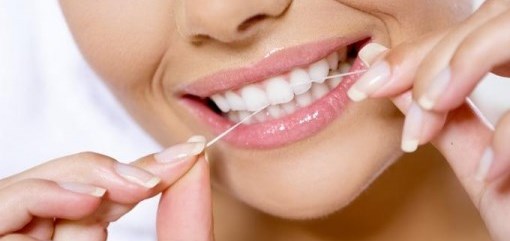Dentists and dental hygienists are always very keen on flossing, urging each and every patient to include it in their regular dental routines and showing them the best way to do it. This is for a very good reason – not only does flossing make your teeth feel a lot cleaner, but it also contributes massively to good oral health, as it removes debris and prevent plaque build-up.
Cleaning teeth with a brush alone will not get all the plaque and detritus off the surface, so flossing completes the procedure and gets into the harder-to-reach areas, such as between your teeth and below the gum. Without flossing, old food particles get stuck and turn into the ideal growth environment for plaque, which in turn lead to cavities, toothache and more serious problems. If left uncleaned, plaque hardens and becomes very hard to remove. It can also cause bad breath.
Flossing once or twice a day will remove plaque from your teeth before it gets the chance to harden. It also freshens up the mouth, leaving it looking and feeling much nicer. Dental floss is easily and widely available from chemists, supermarkets and dental surgeries. It looks like a long piece of thread and is made of a strong, inorganic substance such as nylon. It can be waxed or non-waxed, flat or round, plain or imprinted with fluoride.
To use dental floss, pull off a length of about a foot and wrap it round your fingers, leaving a couple of inches of floss in between. Pull it tight and gently rub up and down in between each teeth, making sure you reach along the whole length. It will leave a smooth feel and a pleasant minty after-taste.
If you gums bleed while flossing, this is not too much of a problem, unless it causes pain. Try not to push the floss too hard into the gum to reduce the risk of damage. Bleeding can be the first sign of gum disease, however, so if it doesn’t clear up after a few days of careful brushing and flossing twice a day, consult your local dentist for prevention and treatment advice. Rinse your mouth after flossing to get rid of any blood or plaque residue.
Alternatives to dental floss include inter-dental cleaning brushes with small, narrow bristles that you rub along the edges of your teeth in a similar technique. You can also buy electric water flossers that shoot high-powered streams of water in between your teeth to remove debris and aid the cleaning process.

